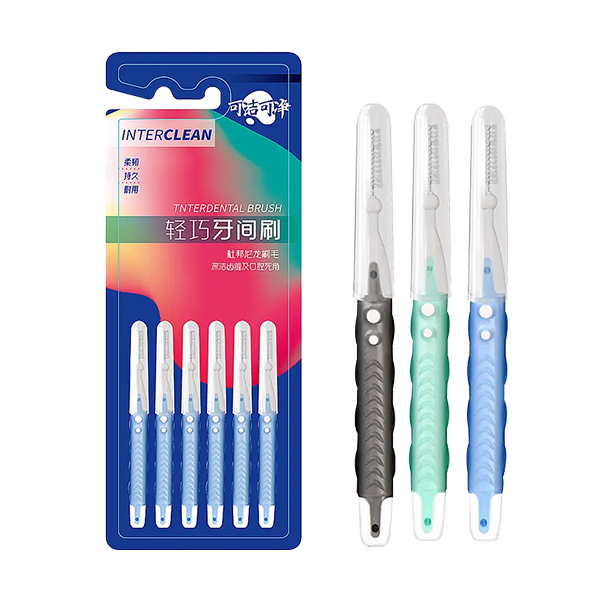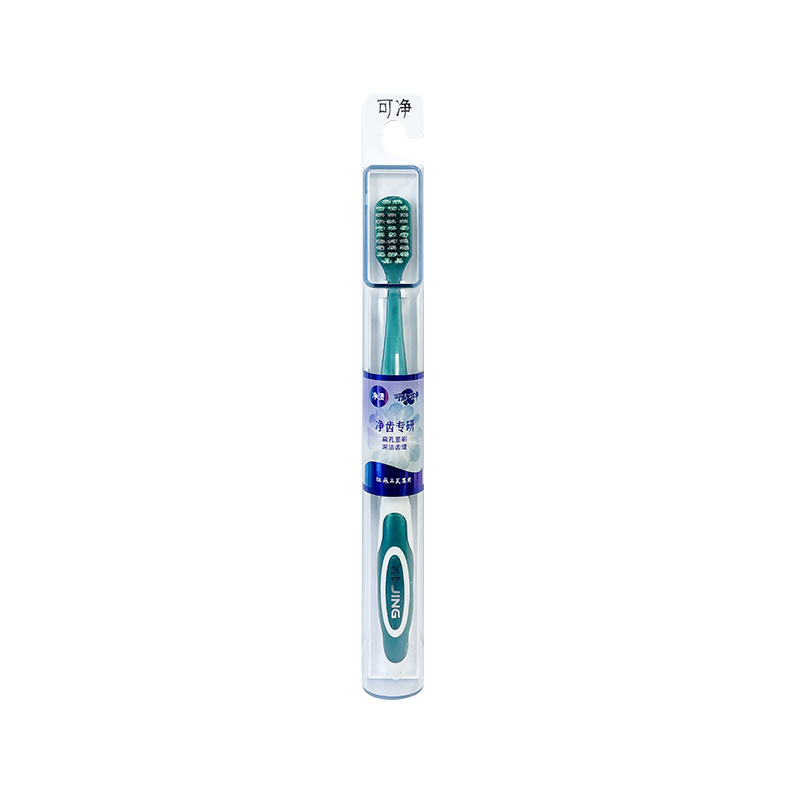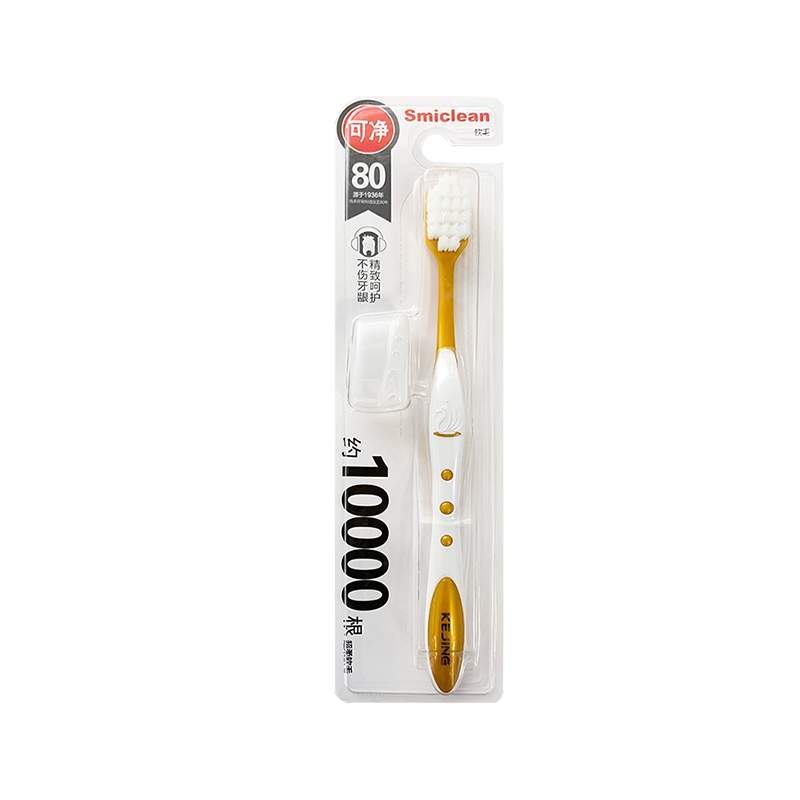How often should you use an interdental brush?
Maintaining a healthy and beautiful smile involves much more than just brushing your teeth twice a day. While brushing is essential, it often misses the spaces between your teeth where plaque and food particles can hide. This is where interdental brushes come in—a small but powerful tool that can significantly improve your oral hygiene. But the common question is: how often should you use an interdental brush?
In this article, we’ll explore the answer to that question in depth. We'll also discuss the benefits of using interdental brushes, how they compare to traditional floss, and why they are rapidly becoming a recommended part of daily oral care routines worldwide. If you're serious about keeping your teeth and gums healthy, this small tool could make a big difference.
What Is an Interdental Brush?
An interdental brush is a small brush specifically designed to clean between your teeth, where a standard toothbrush cannot reach. These brushes resemble tiny bottle brushes and come in various sizes to suit the spacing between different teeth.
Made with soft bristles mounted on a thin wire and often attached to a small handle, interdental brushes are ideal for removing plaque, food debris, and bacteria from the tight crevices in your mouth. They are especially useful for people with braces, bridges, dental implants, or wider gaps between teeth, but they’re suitable for nearly everyone.
How Often Should You Use an Interdental Brush?
Dentists and dental hygienists recommend using an interdental brush once a day, ideally in the evening before or after brushing your teeth. This ensures that you clean out the debris and plaque that your toothbrush may have left behind during the day.
If you have braces or are prone to gum disease, your dentist may recommend using it twice a day or after every meal. Consistency is key. Just like brushing and flossing, using an interdental brush should be part of your daily oral hygiene routine for longterm benefits.
Why Daily Use Matters
Using an interdental brush daily helps to:
Remove Plaque: Prevents plaque buildup in areas a toothbrush can’t reach.
Prevent Gum Disease: Reduces the risk of gingivitis and periodontitis.
Eliminate Bad Breath: Removes trapped food particles that cause odor.
Protect Against Tooth Decay: Helps prevent cavities between the teeth.
Support Gum Health: Stimulates the gums and improves circulation.
Neglecting to clean between your teeth allows harmful bacteria to flourish, leading to inflammation, bleeding, and potentially tooth loss over time. A few minutes a day with an interdental brush can save you from future dental problems—and expensive treatments.

Interdental Brush vs. Dental Floss
You might wonder whether interdental brushes can replace traditional dental floss. The answer depends on your unique dental structure and needs.
Advantages of Interdental Brushes Over Floss:
Easier to Use: Especially for people with reduced dexterity.
More Effective: Better at removing plaque in wider gaps and around braces.
Comfortable: Gentle on the gums with less risk of cutting.
Reusable: One brush can last several uses if cleaned properly.
However, floss still has its place. For very tight contacts between teeth, floss may be more effective. Many dentists recommend using both tools to get the best results, or choosing the one that suits your dental structure best.
Choosing the Right Size Interdental Brush
Interdental brushes come in various sizes, typically colorcoded for easy identification. The correct size is crucial—too small, and it won't clean effectively; too large, and it might damage the gums.
Consult your dentist or hygienist for size recommendations.
You may need different sizes for different areas of your mouth.
Never force the brush into a gap—it should slide in gently.
Starting with a smaller size and increasing if necessary is often the best approach. Some brands also offer interchangeable heads or angled brushes for hardtoreach areas, adding to convenience and efficiency.
How to Use an Interdental Brush Properly
Using the brush correctly enhances its effectiveness and reduces the risk of injury:
1. Insert the Brush Gently: Do not force it between your teeth.
2. Move It Back and Forth: Use a few inandout motions to remove debris.
3. Clean All Gaps: Focus on each space between your teeth, both upper and lower jaws.
4. Rinse After Use: Wash the brush under running water and store it in a clean place.
5. Replace When Worn: Once the bristles start to wear or deform, replace the brush head.
Most interdental brushes last around a week to two weeks with daily use, but this varies depending on the brand and how vigorously you use them.
Special Use Cases
Braces and Orthodontics
People with braces are at higher risk of plaque buildup. Interdental brushes can clean around brackets and under wires better than floss alone.
Dental Implants and Bridges
These require extra attention to prevent infection or inflammation. Interdental brushes provide nonabrasive, precise cleaning around implants.
Sensitive Gums
If your gums bleed initially, don’t be alarmed. This often indicates the presence of plaque and inflammation. With daily use, bleeding typically subsides as gum health improves.
Benefits Backed by Research
Studies have shown that interdental brushes are more effective than floss at reducing plaque and gingivitis. According to the European Federation of Periodontology, daily interdental brushing in addition to tooth brushing is associated with significantly lower rates of gum disease and tooth loss.
Professional dental organizations around the world recommend daily interdental cleaning as an essential part of preventive oral care. With growing awareness and ease of availability, interdental brushes are now a key tool for dental hygiene enthusiasts.
The Bottom Line
So, how often should you use an interdental brush?
At least once a day. That’s the simple answer with profound benefits. Incorporating this small tool into your daily routine helps maintain cleaner teeth, healthier gums, and fresher breath. It only takes a couple of minutes but can prevent years of dental problems.
Your toothbrush can’t reach every part of your mouth—but your interdental brush can.
Ready to Upgrade Your Oral Hygiene Routine?
Whether you're already brushing and flossing or just getting started with a better dental care plan, adding an interdental brush is a gamechanger. Look for quality brands, consult your dentist about sizing, and commit to daily use. Your smile will thank you—not just today, but for years to come.
 English
English русский
русский Español
Español




